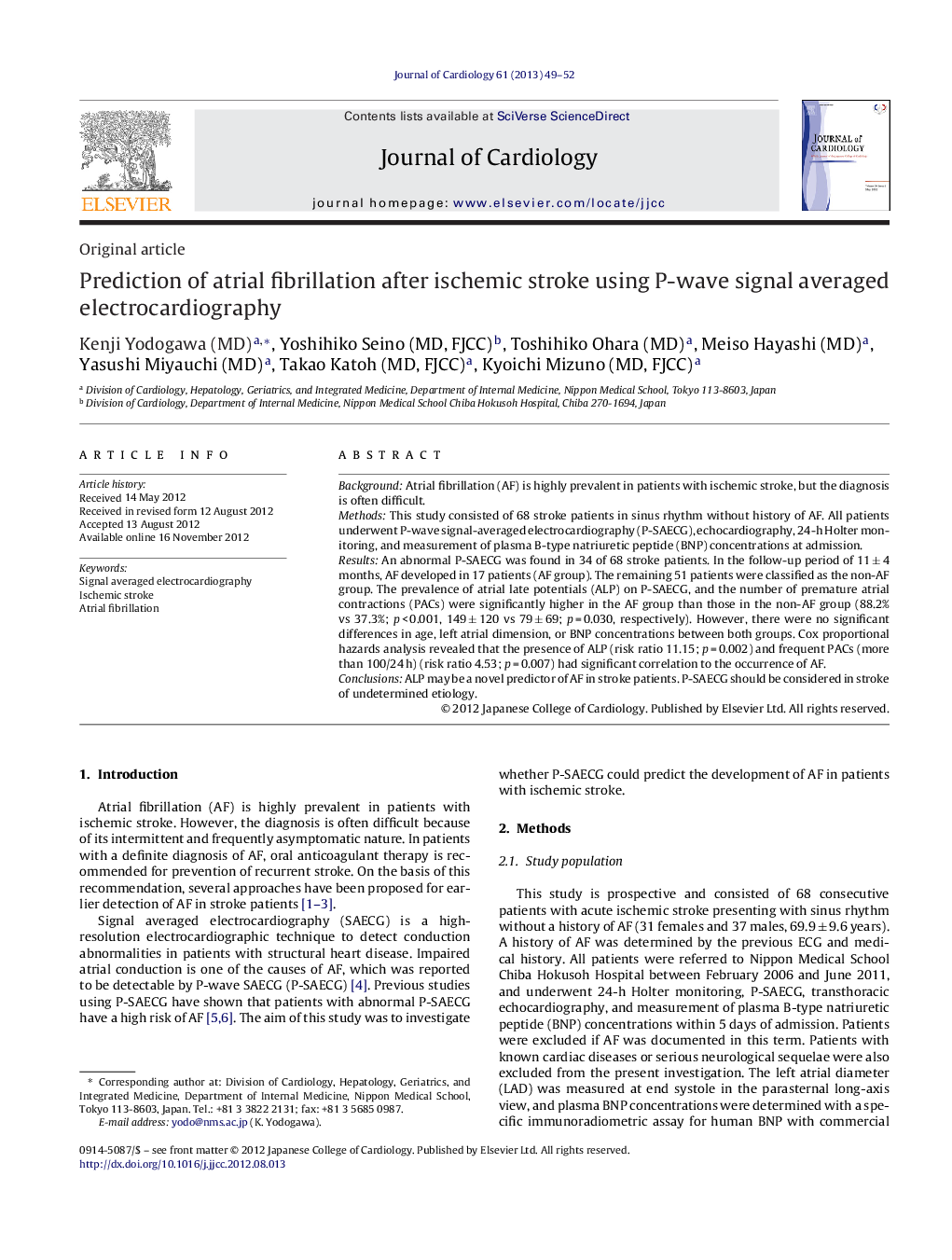| Article ID | Journal | Published Year | Pages | File Type |
|---|---|---|---|---|
| 2963218 | Journal of Cardiology | 2013 | 4 Pages |
BackgroundAtrial fibrillation (AF) is highly prevalent in patients with ischemic stroke, but the diagnosis is often difficult.MethodsThis study consisted of 68 stroke patients in sinus rhythm without history of AF. All patients underwent P-wave signal-averaged electrocardiography (P-SAECG), echocardiography, 24-h Holter monitoring, and measurement of plasma B-type natriuretic peptide (BNP) concentrations at admission.ResultsAn abnormal P-SAECG was found in 34 of 68 stroke patients. In the follow-up period of 11 ± 4 months, AF developed in 17 patients (AF group). The remaining 51 patients were classified as the non-AF group. The prevalence of atrial late potentials (ALP) on P-SAECG, and the number of premature atrial contractions (PACs) were significantly higher in the AF group than those in the non-AF group (88.2% vs 37.3%; p < 0.001, 149 ± 120 vs 79 ± 69; p = 0.030, respectively). However, there were no significant differences in age, left atrial dimension, or BNP concentrations between both groups. Cox proportional hazards analysis revealed that the presence of ALP (risk ratio 11.15; p = 0.002) and frequent PACs (more than 100/24 h) (risk ratio 4.53; p = 0.007) had significant correlation to the occurrence of AF.ConclusionsALP may be a novel predictor of AF in stroke patients. P-SAECG should be considered in stroke of undetermined etiology.
